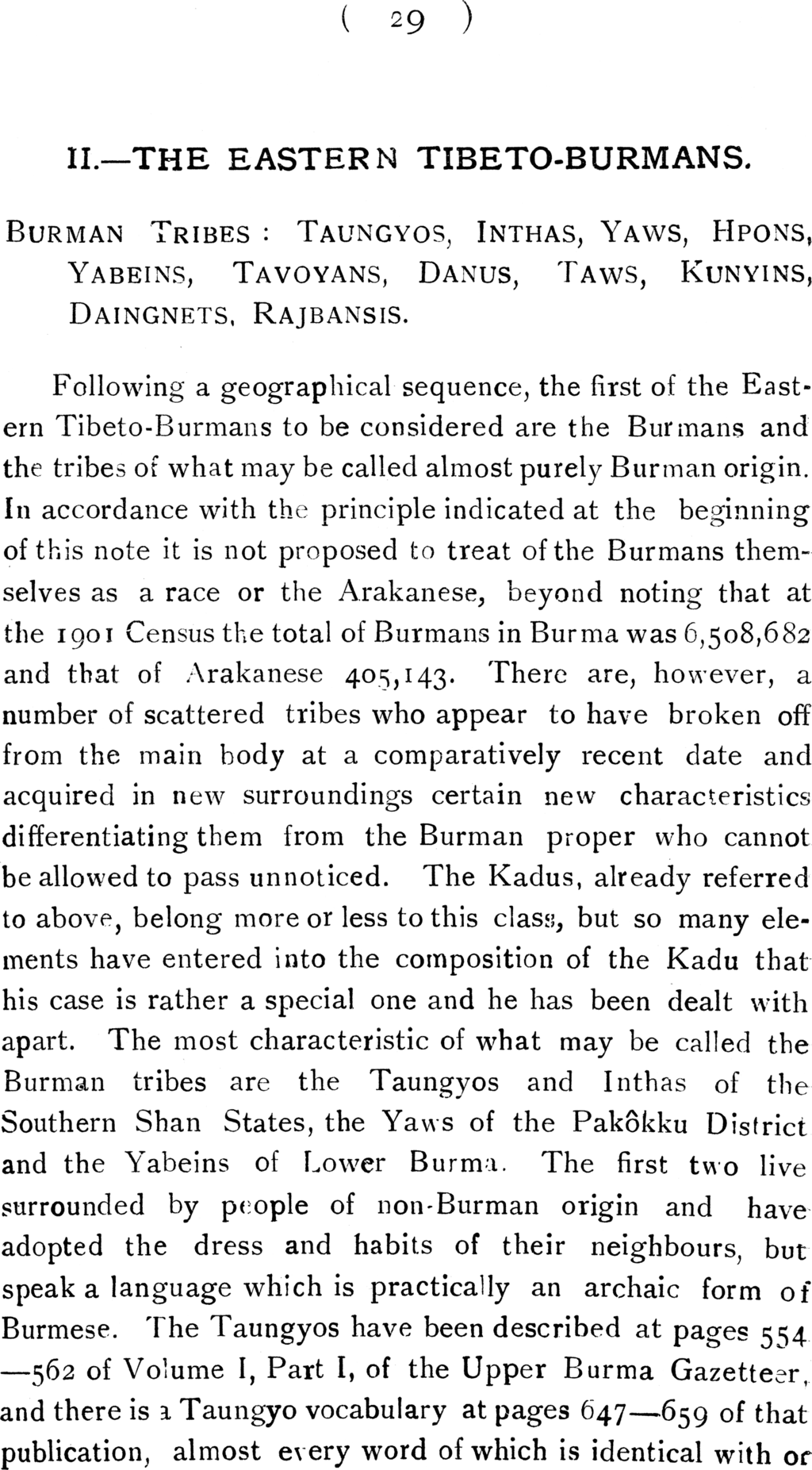(29)
II.—THE EASTERN TIBETO-BURMANS.
Following a geographical sequence, the first of the Eastern Tibeto-Burmans to be considered are the Burmans and the tribes of what may be called almost purely Burman origin. In accordance with the principle indicated at the beginning of this note it is not proposed to treat of the Burmans themselves as a race or the Arakanese, beyond noting that at the 1901 Census the total of Burmans in Burma was 6,508,682 and that of Arakanese 405,143. There are, however, a number of scattered tribes who appear to have broken off from the main body at a comparatively recent date and acquired in new surroundings certain new characteristics differentiating them from the Burman proper who cannot be allowed to pass unnoticed. The Kadus, already referred to above, belong more or less to this class, but so many elements have entered into the composition of the Kadu that his case is rather a special one and he has been dealt with apart. The most characteristic of what may be called the Burman tribes are the Taungyos and Inthas of the Southern Shan States, the Yaws of the Pakokku District and the Yabeins of Lower Burma. The first two live surrounded by people of non-Burman origin and have adopted the dress and habits of their neighbours, but speak a language which is practically an archaic form of Burmese. The Taungyos have been described at pages 554—562 of Volume I, Part I, of the Upper Burma Gazetteer, and there is a Taungyo vocabulary at pages 647—659 of that publication, almost every word of which is identical with or

